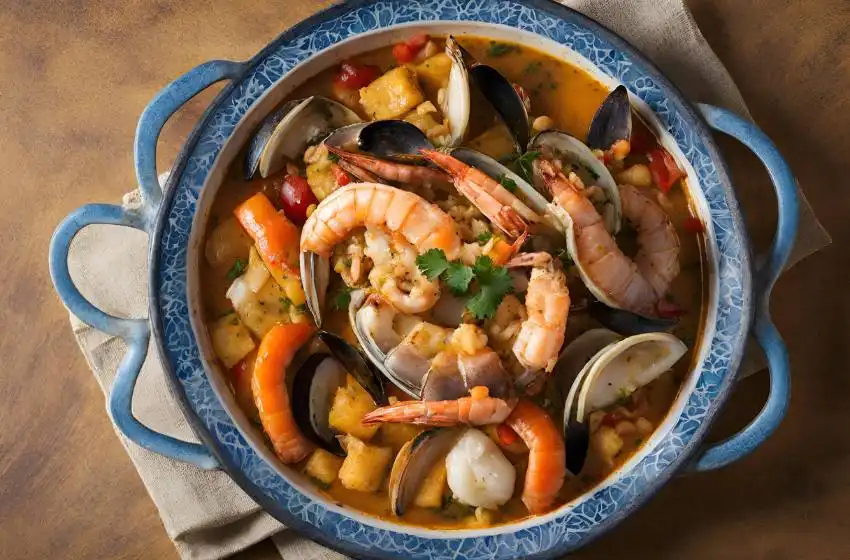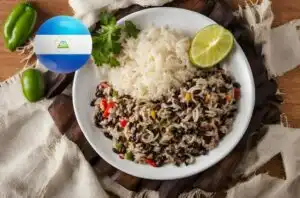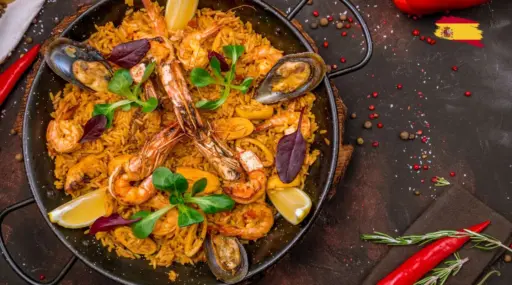Rondón, a hearty and flavorful seafood stew, is a beloved dish in Nicaragua that reflects the country’s coastal heritage and vibrant culinary traditions. This traditional dish is a fusion of indigenous, African, and Spanish influences, featuring an array of fresh seafood, root vegetables, coconut milk, and aromatic spices. Rondón is not only a delicious and satisfying meal but also a celebration of Nicaragua’s bountiful seafood and rich cultural diversity. In this article, we’ll explore the ingredients and preparation methods for making authentic Rondón at home, allowing you to experience the flavors of Nicaragua’s coastal cuisine in your own kitchen.
Ingredients:
Seafood: Rondón typically includes a variety of seafood, such as fish, shrimp, crab, and/or lobster. Fresh, locally caught seafood is ideal for the best flavor and texture. You can use a combination of your favorite seafood or whatever is readily available in your area.
Root Vegetables: Root vegetables such as yuca (cassava), sweet potatoes, and green plantains are essential ingredients in Rondón. These hearty vegetables add sweetness and texture to the stew and help to thicken the broth as they cook.
Coconut Milk: Coconut milk is the base of the broth in Rondón, providing richness and creaminess to the stew. Use either canned coconut milk or fresh coconut milk extracted from grated coconut.
Aromatics: Aromatic ingredients such as onions, garlic, bell peppers, and tomatoes are used to flavor the stew. These ingredients add depth and complexity to the broth, enhancing the overall flavor of the dish.
Spices: Common spices used in Rondón include cumin, paprika, thyme, and bay leaves. These spices add warmth and depth to the stew, complementing the flavors of the seafood and vegetables.
Hot Peppers: Hot peppers such as jalapeños, habaneros, or Scotch bonnets are often added to Rondón to give it a spicy kick. Adjust the amount of hot peppers according to your personal preference for heat.
Lime Juice: Fresh lime juice adds brightness and acidity to the stew, balancing out the richness of the coconut milk and seafood. It is typically added just before serving to enhance the flavors of the dish.
Preparation:
Prepare the Seafood: Start by cleaning and preparing the seafood for the stew. If using whole fish, fillet and remove the bones. Peel and devein the shrimp, and crack and clean the crab or lobster. Cut the seafood into bite-sized pieces, keeping the shells on for added flavor if desired.
Prepare the Vegetables: Peel and chop the root vegetables into bite-sized pieces. If using yuca, be sure to remove the tough, fibrous core before chopping. Dice the onions, bell peppers, garlic, and tomatoes. Slice the hot peppers, removing the seeds if you prefer less heat.
Sauté the Aromatics: In a large pot or Dutch oven, heat a small amount of oil over medium heat. Add the diced onions, bell peppers, garlic, and hot peppers to the pot, along with a pinch of salt and pepper. Sauté the aromatics until they are soft and fragrant, usually about 5-7 minutes.
Add the Spices: Once the aromatics are cooked, add the spices to the pot, including cumin, paprika, thyme, and bay leaves. Stir the spices into the mixture and cook for an additional 1-2 minutes, allowing the flavors to bloom.
Add the Coconut Milk: Pour the coconut milk into the pot, stirring to combine with the aromatics and spices. Bring the mixture to a gentle simmer, then reduce the heat to low and let it cook for 10-15 minutes, allowing the flavors to meld together.
Add the Root Vegetables: Add the chopped root vegetables to the pot, stirring to coat them in the coconut milk mixture. Let the vegetables simmer in the broth until they are tender, usually about 15-20 minutes, depending on the size of the pieces.
Add the Seafood: Once the root vegetables are cooked, add the seafood to the pot, arranging it evenly in the broth. Cover the pot and let the seafood cook gently in the broth until it is opaque and cooked through, usually about 5-10 minutes, depending on the type of seafood used.
Finish and Serve: Just before serving, stir in a squeeze of fresh lime juice to brighten the flavors of the stew. Taste the broth and adjust the seasoning as needed, adding more salt, pepper, or spices to taste. Serve the Rondón hot, garnished with fresh cilantro or parsley if desired. Enjoy this flavorful and satisfying seafood stew with rice, plantains, or crusty bread for dipping.
Tips for Success:
Use Fresh Seafood: For the best flavor and texture, use fresh, high-quality seafood for making Rondón. Look for locally caught fish and shellfish at your nearest seafood market or fishmonger.
Adjust the Heat: Adjust the amount of hot peppers used in the stew according to your personal preference for heat. If you prefer a milder stew, remove the seeds and membranes from the peppers before adding them to the pot.
Don’t Overcook the Seafood: Be careful not to overcook the seafood, as it can become tough and rubbery if cooked for too long. The seafood should be opaque and cooked through, but still tender and juicy.
Get Creative with Vegetables: Feel free to experiment with different types of root vegetables in Rondón, according to your taste preferences and what’s available. Other vegetables such as potatoes, carrots, or squash can also be added to the stew for extra flavor and texture.
In conclusion, Rondón is a delicious and satisfying seafood stew that showcases the rich flavors and culinary heritage of Nicaragua’s coastal cuisine. By following this traditional recipe and incorporating your own personal touches, you can create a flavorful and memorable dish that will transport you to the shores of Nicaragua with every spoonful. Whether enjoyed as a comforting meal on a chilly evening or as a special treat for a gathering with friends and family, Rondón is sure to become a beloved favorite in your culinary repertoire.








































Leave a Reply